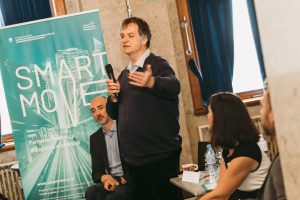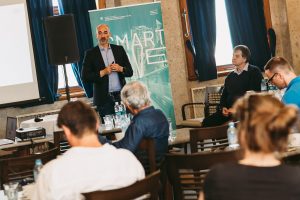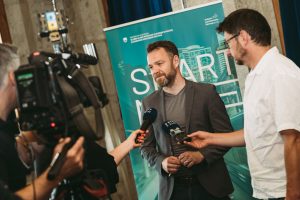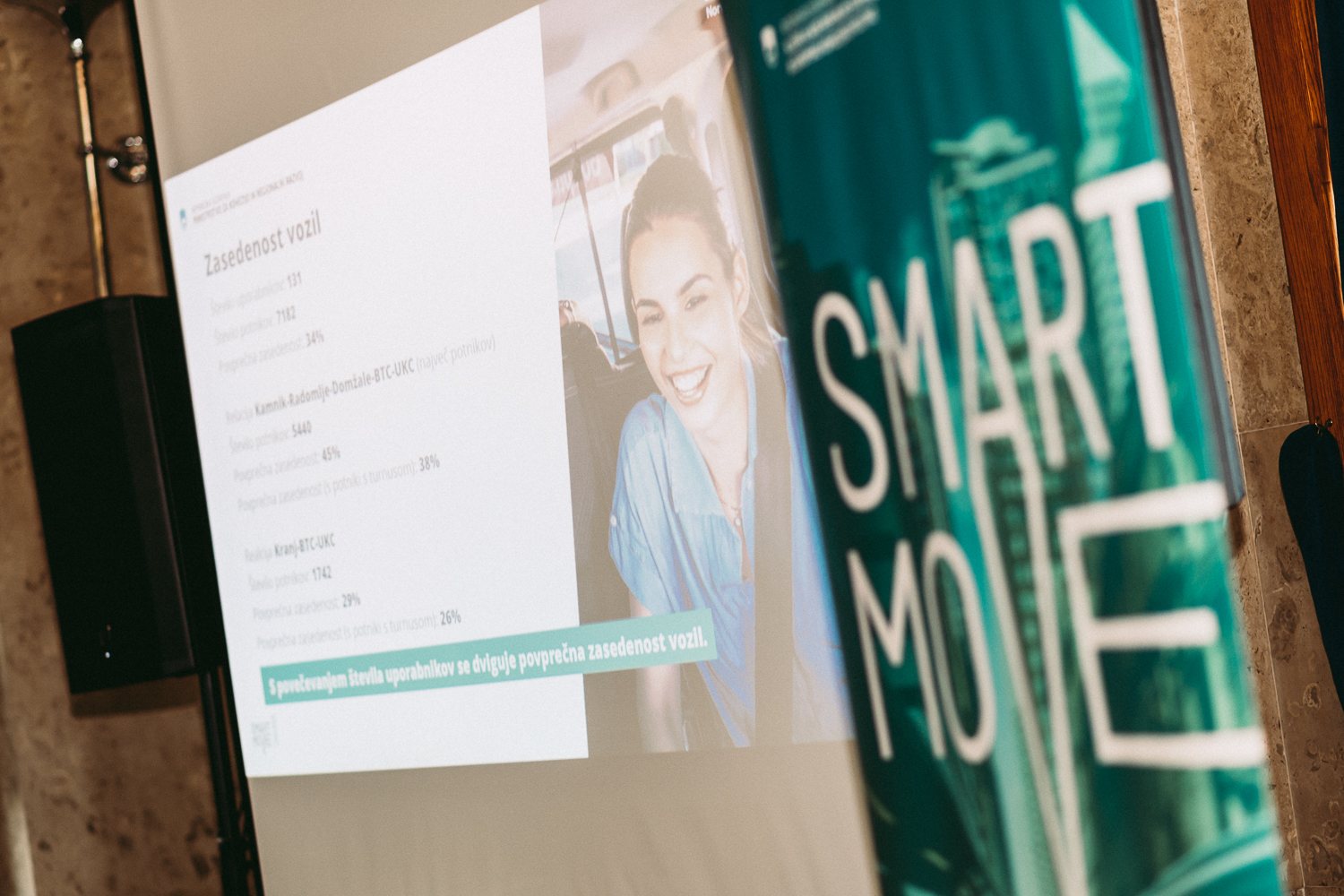As part of a three-month pilot project, more than 100 people from municipalities between Kranj and Ljubljana hopped on a van every day and traveled sustainably to their workplaces in the area of UKC and BTC with fellow passengers. Three-quarters of the users would choose this mode of travel to work in the future, mainly because it eliminates the worries and stress associated with driving their own car. They would be willing to pay around 70 euros per month fort his kind of transfer, which is less than half of the estimated actual cost per person. The reduction of various emissions, ranging from 37% to 70%, attributed to this modality by the Jožef Stefan Institute, can be a strong motivation for finding additional funding sources for its long-term existence.
Organized shuttle transportation, where employees could choose their departure and return times from work was in test course for three months – in February, March, and April 2023 – and was free for all users. The project was designed and fully supported as part of the European project SmartMOVE – Smart Solutions for Sustainable Mobility, financed by the Norwegian Financial Mechanism EEA, with the participation of Slovenia. “Eight organizations are intensly cooperating, striving to find concrete solutions for better mobility management in areas with heavy traffic, primarily with the aim of mitigating its consequences,” explained Klemen Gostič from the Regional Development Agency of the Ljubljana Urban Region RRA LUR, the leading partner of the project. He emphasized that “Ljubljana provides more than 220,000 workplaces, which is more than a quarter of all jobs in Slovenia. This is why more than 120,000 people commute to Ljubljana daily, leaving the city and its surroundings with the highest traffic volume in Slovenia. The motorized private transport causes the largest carbon footprint. According to data from 2021, it accounts for 80% of all daily trips in Slovenia.”
“In addition to developing mobility plans for selected organizations, the pilot project of group transportation to work is one of the main project elements, so we are pleased that it was carried out by an experienced partner GoOpti, who coordinated the transportation flawlessly. Thanks to a thorough data processing carried out by the Knowledge Technologies Section and the Environmental Sciences Section at the Jožef Stefan Institute, we can also understand the effects of this type of transportation on emission reduction very well,” summarized Gostič.
The largest employer in Slovenia, the University Medical Centre Ljubljana (8,500 employees) joining the SmartMOVE project was followed also by BTC d.d. (for the BTC City shopping center area) and IKEA Slovenia d.o.o.. Based on the analysis of the travel habits of employees in these areas, the municipalities of Kranj, Kamnik, Domžale, Radomlje, Komenda, Mengeš, and Trzin were selected for the pilot transportation project. Through the website, especially set up for this project, GoOpti received 573 applications for transportation. 131 users were finally selected, using the transportation once to five times a week.


The analysis of surveyes showed that the dynamic shuttle, adapted to demand, mostly attracted passengers who would usually use their own vehicles (73%) for the same routes. Passengers value the peace of mind that this mode of transportation brings, its reliability, proximity to the pick-up and drop-off stations, comfort, and the fact that it eliminates the hassle of finding parking spaces. “In the pilot project, we needed to test as many scenarios as possible, so we also included shift workers in the transportation. That’s why the average occupancy rate is relatively low (34%), but the numbers are still encouraging – we managed to reduce CO2 emissions by 37%, which could be further improved by an additional 20% with the use of electric vehicles, and NOx and particulate matter (PM) by up to 70%,” summarized Marko Guček, CEO of GoOpti. Prof. Dr. Marko Bohanec from the Knowledge Technologies Section at the Jožef Stefan Institute explained that the calculations were based on various scenarios and journeys, taking into account factors such as vehicle age and the type of fuel the analyzed passengers would otherwise use, the length of their trips etc. The best results were achieved on the Komenda – UKC route. “A higher average occupancy rate, such as on the Kamnik – Radomlje – Domžale – Ljubljana route, would undoubtedly result in a significant reduction in commuting emissions,” explained Marko Guček, CEO of GoOpti, adding that on the Domžale route, during peak hours, they could easily count on the desired 75% occupancy.
“We believe that the long-term existence of the dynamic shuttle is possible, but would require close cooperation of the public passenger transport, carpooling, target companies and users. At the national level, it should be cosidered whether this mode of transfer, together with other possible alternatives, can be functionally integrated into the mobility management strategy and if so, the funding fundamentally rethought. On the other hand, employers could also take initiative and, for example, redirect their investments in parking spaces into various forms of sustainable mobility for their employees. All the mentioned entities along with municipalities could play a role in a joint model,” concluded Guček. He also expressed the desire to collaborate more closely with the public passanger transport in the future: “We would like to test dynamic group transportation from home to public transport stations and back.” They also see the future in opening up a carpooling application, which would allow them to utilize the empty seats in vehicles, already present on the roads day by day.
Klemen Gostič from RRA LUR called on companies to address the topic of sustainable mobility more intensively among their employees. To support this segment, a series of free educational workshops will be held for companies in the fall of 2023, aimed at raising awareness among management about possible measures and motivating employees to change their travel habits. Companies may send their interest through the website www.smart-move.si.





